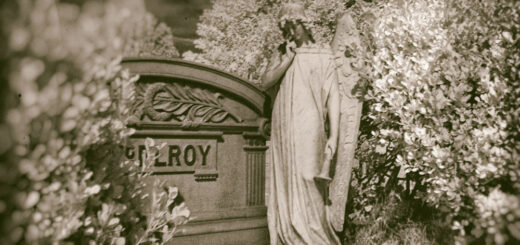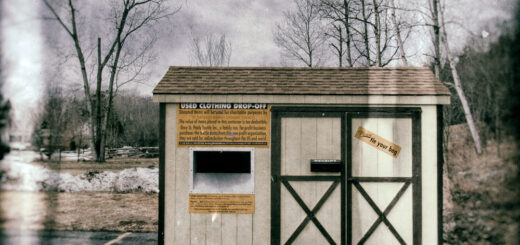The Genius of Kaaterskill Falls
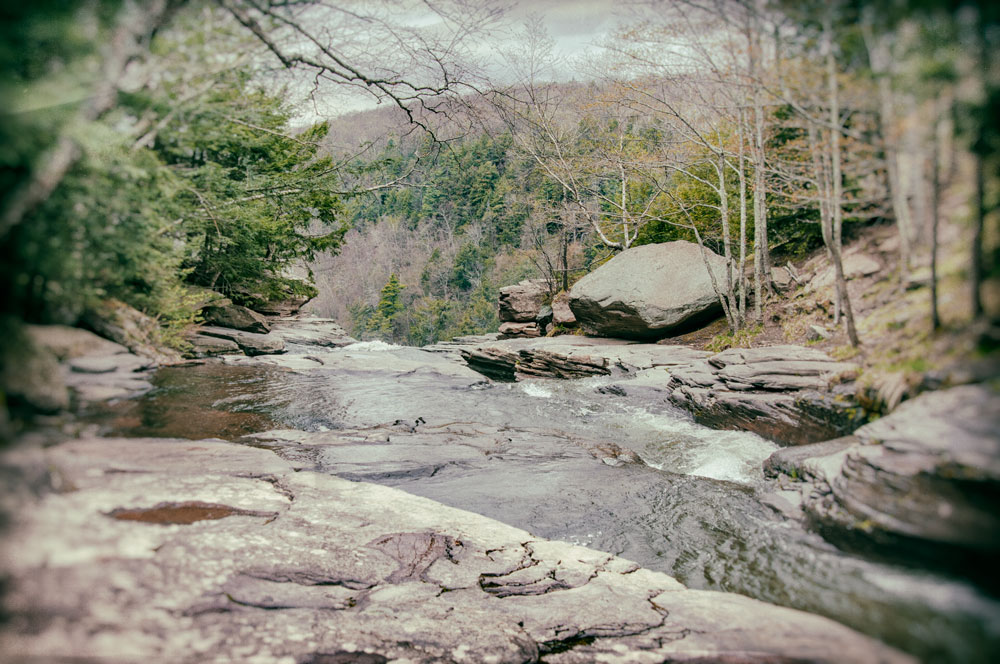 [The other day I was cleaning out some files and came across this ghost story that I heard when I was growing up. I wrote it down—to the best of my memory—twenty-five years ago. Kaaterskill Falls and its environs have changed drastically in the years since—and so have we all. It’s more difficult now to spot the pale blue luminescence (ghosts don’t like crowds), but making the effort is probably still worth it.]
[The other day I was cleaning out some files and came across this ghost story that I heard when I was growing up. I wrote it down—to the best of my memory—twenty-five years ago. Kaaterskill Falls and its environs have changed drastically in the years since—and so have we all. It’s more difficult now to spot the pale blue luminescence (ghosts don’t like crowds), but making the effort is probably still worth it.]
A local legend has it that if you stand at the brink of Kaaterskill Falls when the light of the moon is just right and gaze down at a particular flat-topped boulder in the middle of the creek, you can see her sitting there still, a pale blue luminescence. How many people have actually glimpsed her is not at all clear—stories of this kind are notoriously elusive, flitting in and out of certainty, perhaps borne on the same current as our moods and our memory. You can say that she is something like true love: often talked about but seldom met in real life. Nevertheless, you may wish to investigate this matter for yourself.
Go then to Kaaterskill Falls, which are in the Catskill Mountains, not far from where Rip Van Winkle took his twenty-year nap and dreamed his twenty-year dream. I could draw you a map, but how reliable would that be? The best places are never found on a chart.
In early nineteenth-century America, just as the Puritan heaven was giving way to modern destination resorts, Kaaterskill Falls entered the popular imagination. The painters painted it and the poets versified it, then the lovers descended on the place, as they would in later years on the less lofty Niagara, to gain something for themselves of the artists’ inspiration, to witness the water’s twisting surrender to the air, its rapid and bewildering passage from above to below. Ah, but that was long ago, and the place is nearly forgotten today. There isn’t even a sign posted for it anymore.
During the Kaaterskill’s heyday, a wily entrepreneur—operating on the principle of “You get what you pay for”—built a dam on the creek just above the falls so he could control the stream flow. If you wanted to make a splash with your date, you had to give the gatekeeper a quarter to “turn on the falls.” Almost nobody objected to this arrangement, perhaps because in those days it was still believed that art improved nature. Nevertheless, there are always a few scofflaws who resist the commercial mitigation of the wild heart.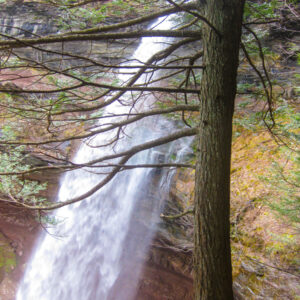
In this case it was an enthusiastic suitor who knew that a fetching landscape would fetch him his love, so he brought her to Kaaterskill Falls. He didn’t have much money and he resented having to pay for the privilege of pitching his woo, so he devised a plan to steal some water that he might steal a kiss. One summer night when the moon was full and nobody was guarding the dam, the young suitor led his unchaperoned darling through the forest to the base of the falls and set her up on a flat-topped boulder in the middle of the creek. She was wearing a blue wool dress. He could see the moon in her eyes, and in that moon he could see his own image reflected.
Unfortunately, the dam on the stream above had reduced the falls to a mossy dribble, hardly commensurate with the young suitor’s exuberance. He was in love! Where was the torrent he required? This was supposed to be a wild place where you might do wild things. Everything about the moment seemed to say: “Show me your love!”
So the young suitor left his love in her blue wool dress, scrambled up the steep and thickly wooded side of the canyon, and made his way to the dam above the falls. Everything was still. Behind the dam was a lovely lake and it reflected the lovely moon. For a moment or two, he pondered the stillness of the lake, and the stillness of the moon in the lake, and the stillness of his own image in the moon in the lake. Then he threw open the gates. Wide open.
The waters, so placid just a moment ago, let loose in a furious rush. The surge was a surprise. The roar was terrific. Things emptied out more quickly than he had anticipated. Although the moon in the sky held its place, the moon in the lake was swept over the brink by the freshet this man had set free. He could hear the horrific flood making its way down the canyon, scouring out the stream channel, uprooting ancient trees and tossing boulders that had lain untossed since passage of the last glacier. This deluge, now booming, now crashing, now fading away in the valley below, dissolved at last into the night. Silence returned. Gone was the artificial lake, and gone its genuine beauty. In its wake, a vast and unsavory meadow of mud, unredeemable even by the light of the moon. Below the falls lay havoc unimaginable.
In a panic, the young suitor thrashed his way back through the dark forest and down the steep side of the canyon to the spot where he had left his love. She was gone. The boulder itself had shifted some thirty feet down from where he remembered it. A tangle of fallen trees was lodged against its upstream side. Everything was dripping with mud. He shouted her name. Only the echo returned.
During the next several days the distraught young man combed the dangerous watercourse downstream from the falls but could find no trace of the girl. Some say she got tired of waiting for her ardent date, so she simply walked off in annoyance. Others say she was swept to her death by the flood, and now her ghost, enshrouded in what appears to be a blue wool dress, haunts the base of the falls in the vicinity of a particular flat-topped boulder. Of the young suitor himself, no further word save that, before he went away in despair too deep to be fathomed, he chiseled the silhouette of his lost love into the rock near the lip of the falls, a graven image that remains visible to this day.
As for that pale blue luminescence seen when the light of the moon is just right, there are those who insist it is only an ignis fatuus, a “foolish fire” sought by painters, poets, and kooks who would seduce us away from the facts. I have seen it once or twice myself. It is the genius of Kaaterskill Falls, which is to say that higher and more spacious form of presence whose extent nobody quite knows. Every place, like every human being, has such a genius, though it can be very difficult to discern. Those who do not expect it will not find it, for it is trackless and forever wild. Expect it, and things could be otherwise.
But as I said, this is a local legend. The story is authentic. Either this or something like it.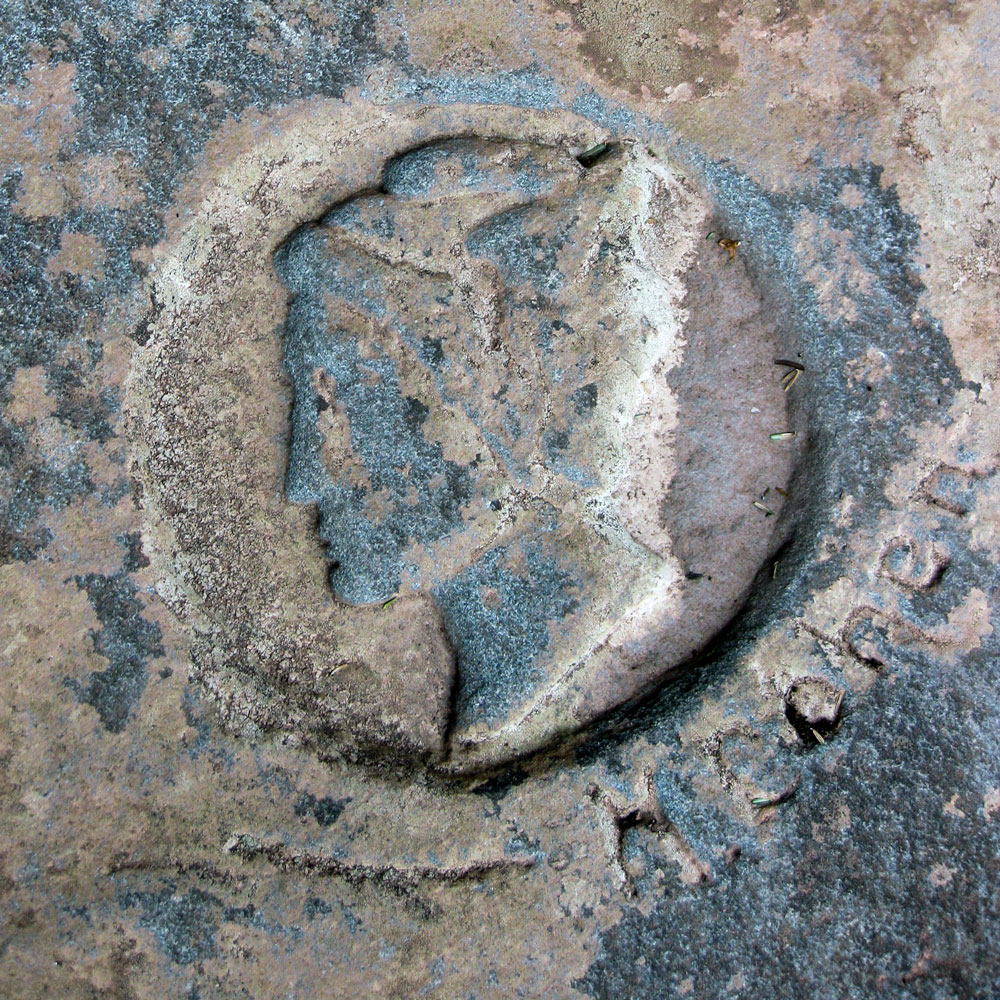 ©John P. O’Grady
©John P. O’Grady
Published in The Mountain Eagle on March 26, 2021
